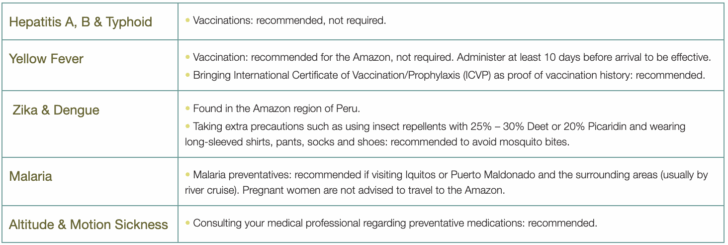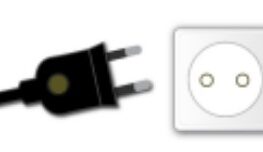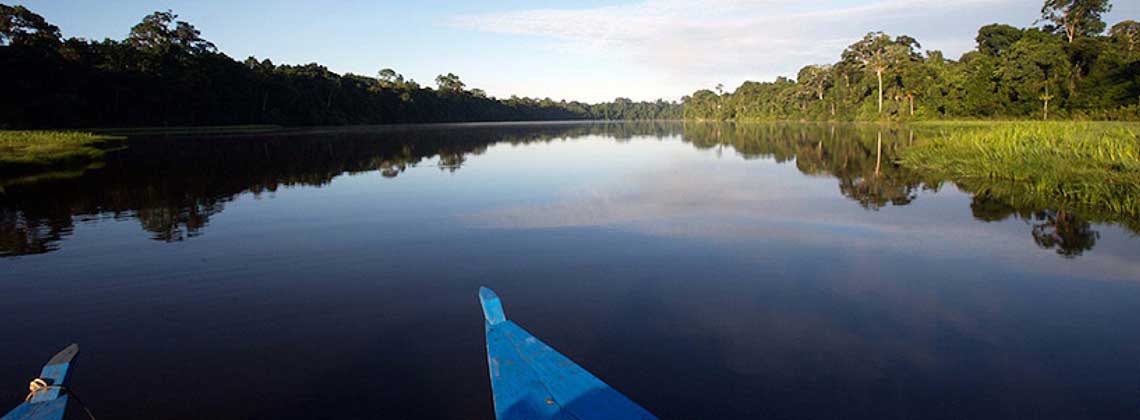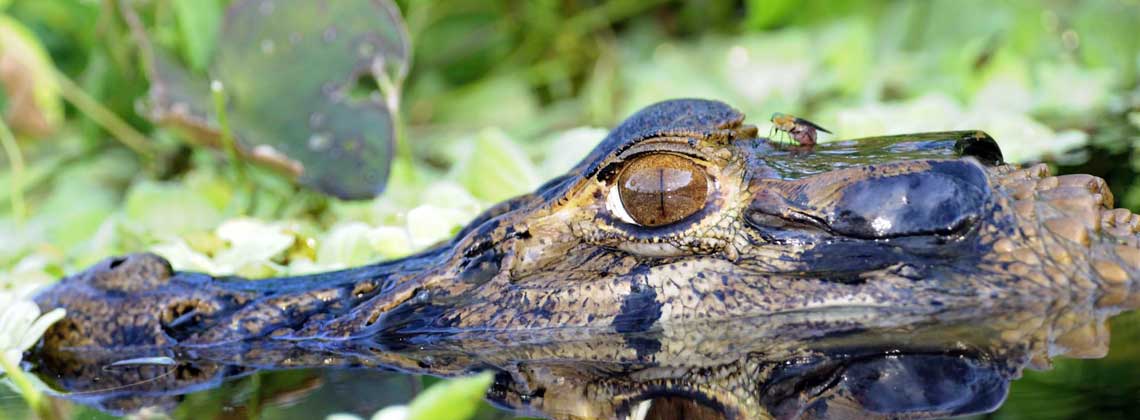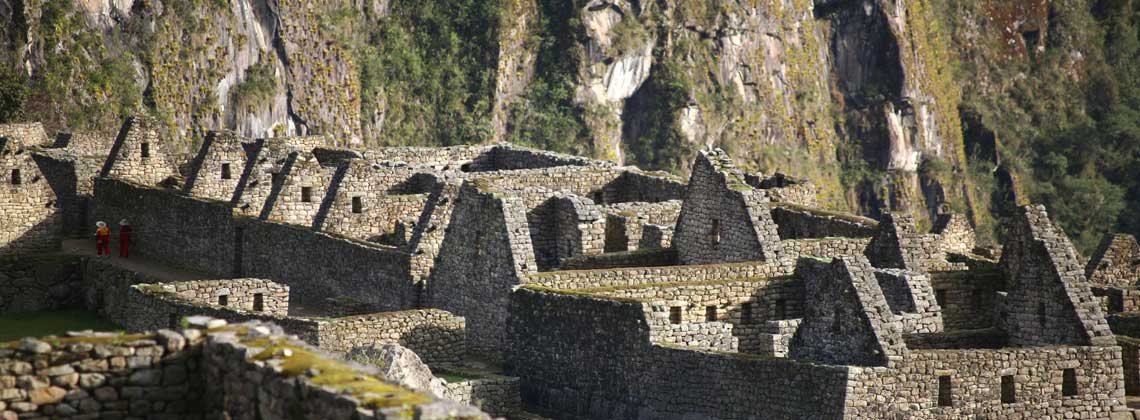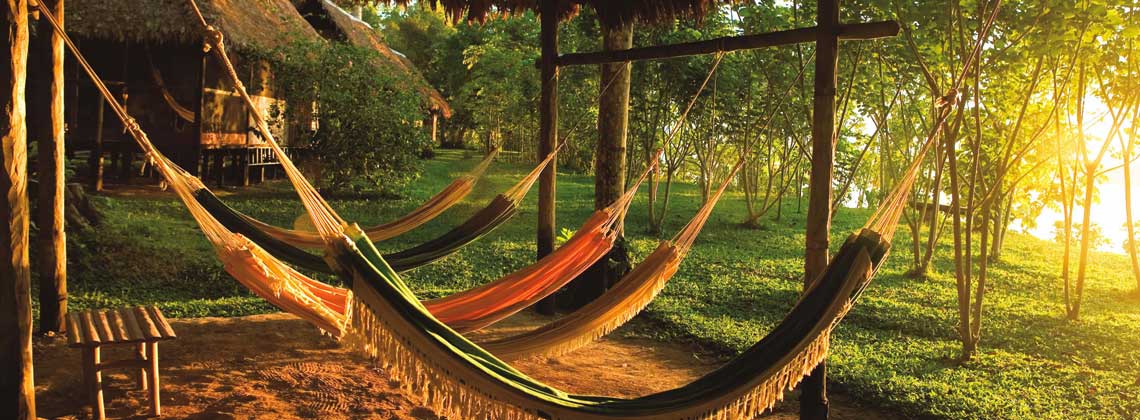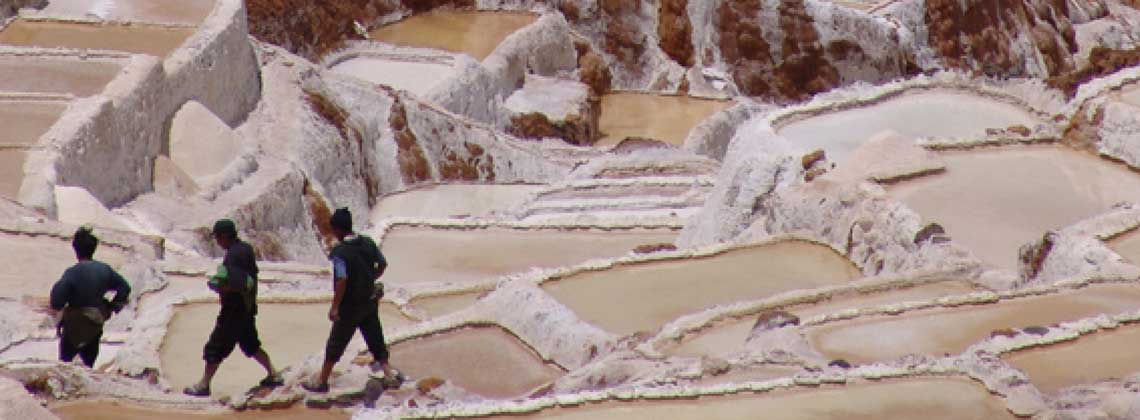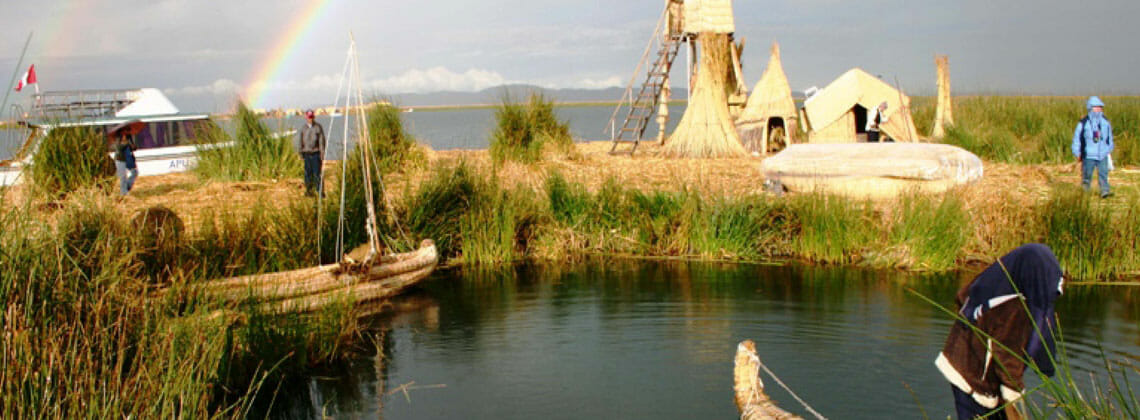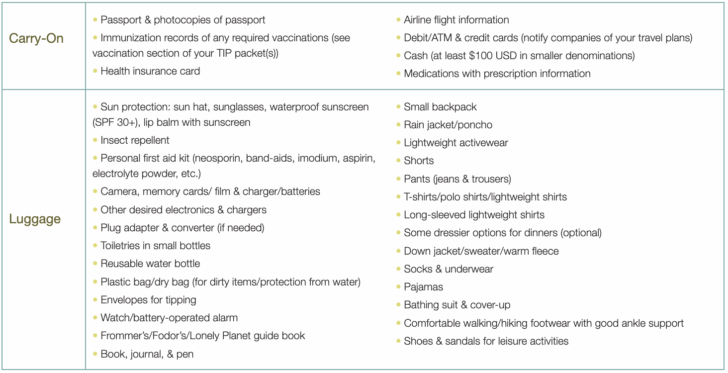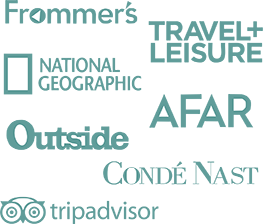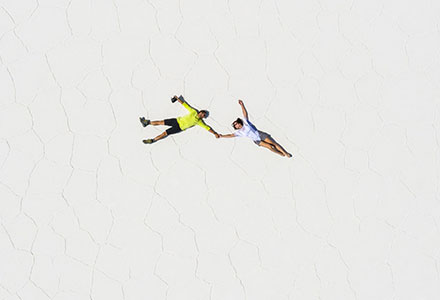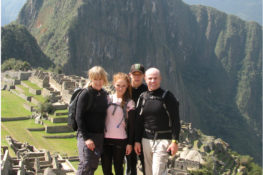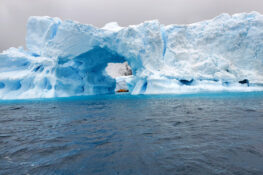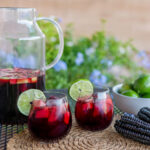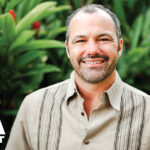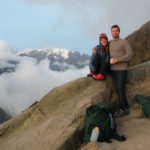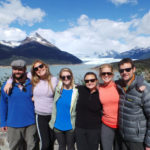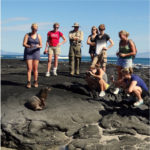- No visas/reciprocity fees needed for U.S. citizens to enter Peru.
- No visas/reciprocity fees needed for Canadian citizens to enter Peru.
- Travelers may experience some symptoms of altitude sickness due to the elevation. If you have a heart/lung condition (e.g. high blood pressure, asthma, angina etc.), it is important to consult your medical professional whether or not traveling to high altitudes is advised.

- The official currency is the sol. When paying with cash, soles are preferred, though USD are also accepted at many businesses.
- Local ATMs distributing soles are the easiest way of getting cash and use the most current exchange rate. However, many charge a small fee for foreign cards, and your bank may also charge an international ATM fee (usually $5 USD or under). Some also have transaction withdrawal limits, so for large sums, plan ahead. Obtain cash before flying out to more remote areas where there are few or no ATMs, such as the Amazon. There are several at the Lima and Cusco airports, as well as one at the Lima airport hotel. Keep small change for bathroom entry fees at historical sites, including Machu Picchu.
- Debit and credit cards are often accepted in nice restaurants and large shops, and can usually be used at hotels for any discretionary costs. Make sure to notify dates and countries of travel, note phone numbers needed to cancel cards if lost/stolen and bring back up cards.
- Bring at least $100 USD per traveler in small bills as back up funds in case there are any issues with your cards.
- Talk to your bank about foreign currency ordering services if you prefer to arrive with soles in hand.
- Traveler’s checks should be an emergency option only, as they are rarely used in Peru and can only be cashed at large banks.
- Tips in Peru are seen as a bonus and tips in soles are preferred.
- Use the following only as a framework and tip based on the level of service you receive.
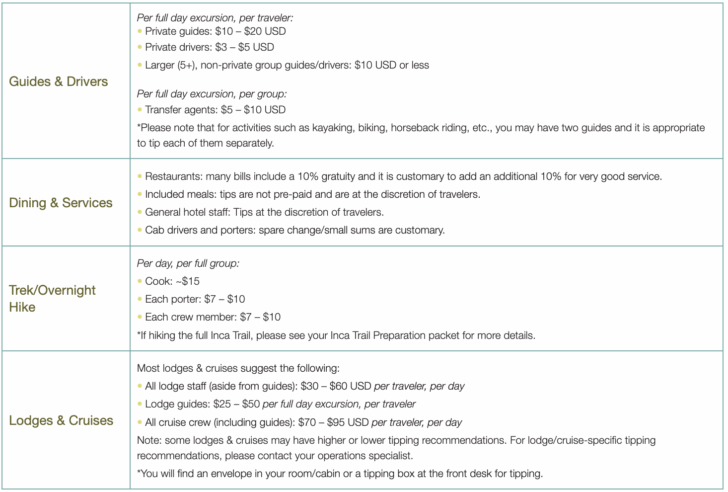
- Trip insurance is not included in your trip cost. Knowmad highly recommends insuring your trip, as the unforeseeable is just that, unforeseeable. a few days after confirming your trip, you will receive an email from our recommended travel insurance provider with a pre-built quote that you’ll be able to purchase.
- Most electrical outlets in Peru accept the 2-pronged plugs with flat blades found in the U.S. (Type A).
- Some facilities accept plugs with 2 rounded prongs instead (Type C, see example on right), so bring an adapter just in case.
- Accepted voltage: 220. Devices like cameras and phone chargers will accept this voltage, but hair dryers and curlers of 110 volts will likely fry.
- A converter is needed if devices do not accept 220 volts. Check labels for compatibility.
- Using bottled water for drinking and brushing your teeth is recommended as tap water is not safe to drink.
- Request your beverages without ice (“sin hielo”) while at restaurants, as the ice may not be made with purified/bottled water.
- Many establishments will have bottled water available. Bringing a reusable water bottle with you is recommended, as there is a large container of water in the van that you can use to refill your bottle throughout the day & in the evening, your hotel’s front desk can also refill your bottle.
- Restaurants in Peru have gotten really popular, especially in Lima and Cusco. Central, Maido, Chicholina, Map Café, and Astrid y Gaston in particular can fill up far in advance (up to four months ahead for Central and Maido, depending on the season). Make reservations at least 2 months in advance for the Christmas, New Year’s and Easter holiday dates or further in advance if looking to dine at a particular restaurant. Click here for a list of Knowmad’s favorites.
Peru is considered a safe country, but petty crime does occur. Take the following precautions:
- Non-violent demonstrations are common in Peru and should be avoided.
- Be aware of your surroundings, always keeping a close eye on your belongings, especially in crowded places.
- Use a bag that zips, doesn’t hang loosely and when in crowds, move it to the front of your body.
- Avoid wearing flashy/expensive jewelry/watches.
- Carry only the money you need each day. Keep the rest with your valuables in your hotel room’s safety deposit box.
- Check out the U.S. State Department travel advisories for the latest information.
In the time leading up to your trip, it is a good idea to do as much hiking as possible. Along with day hikes, try and fit in a few multi-days hikes if possible, and at as high of an altitude as your surroundings allow. Hikes that involve significant uphill hiking are ideal.
Aside from hiking, build up your overall fitness. Create a weekly fitness plan, doing aerobic exercise several times a week. The earlier you start preparing for your trek, the better prepared your heart and lungs will be. It is also a good idea to build up your leg and core muscles, as these are what you use most while hiking. You will be walking up a lot of stairs during the trek, so using stairs or a step machine as part of your training routine is also beneficial. The treadmill on the highest setting for steepness is also a good exercise.
During this time, we also recommend ensuring that the hiking shoes or boots you plan to use on the Inca Trail have been broken in and are comfortable enough for longer treks.
The Inca Trail involves 4 full days of hiking with the average distance being 6.5 miles per day. The full trek is 26 miles. For most people in moderate to good physical condition it could take an average 6 to 7 hours of hiking per day with one day often stretching to 8 or 10 hours. There are significant ups and downs and the highest point of elevation on the hike is 13,778 feet. You are often hiking on uneven terrain, including Incan stairs and stones, which involve a lot of focused concentration to continue climbing for long periods of time. The third day of the trek is the most difficult for most, stretching to 10 or even more hours of hiking for some travelers. The first day is the easiest, but it is very important to still pace yourself to conserve your energy for the days to come. Even for those accustomed to long, multi-day hikes the altitude can make the Inca Trail a difficult trek. It’s important to go into the trek prepared to be challenged not only physically, but mentally as well. Below is a map showing each day of the trek.
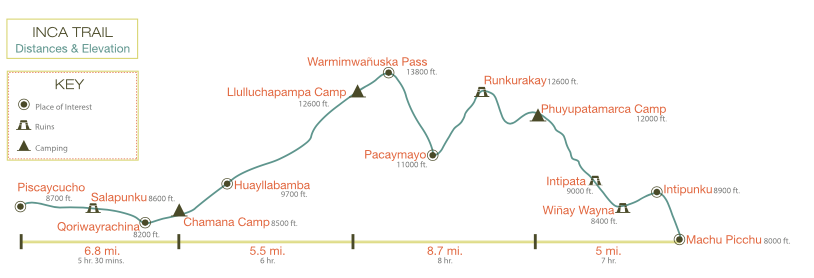
Knowmad is one of the few permitted to camp in remote sites away from the crowds. Night one we camp near the archaeological sites of Wayna Q’ente and Llaqtapata in a nearly private campsite. The following night we camp at Llulluchapampa outside the high-altitude indigenous Andean village of Huayllabamba with a breathtaking view of Mount Huayanay. The third night we camp in a beautiful clearing in the vicinity of Phyupatamarca (translates to the village on the edge of the clouds), where there are likely to be a few other groups camping. This combination of sites ensures remoteness, sweeping views, and visits to lesser-known archaeological sites.
All of your campsites will have a toilet tent set up for your use. It will be just outside the camping tents, about 3 meters away. Only your first campsite will have access to a shower. While you are hiking during the day, there are several national park bathrooms along the way for your use. Unfortunately, these bathrooms are not very well maintained by the park. Most travelers prefer to use the toilet tent that will be set up for you at each campsite and also at lunch time.
Your breakfast, lunch and dinner are very filling, scrumptious meals. You will be given snacks each morning and be able to eat them through the day as you like. Here is a sample day’s menu while on the trail:
- Breakfast (around 7 a.m.): Yogurt, granola, bread, cheese, and tea or coffee.
- Morning snack (11 a.m.): Two pieces of fruit, chocolate, and nuts.
- Lunch (1 p.m.): Soup and grilled chicken with potatoes.
- Afternoon tea and snack (6 p.m.): Cake, popcorn, and tea or coffee.
- Dinner (7 p.m.): Soup, beef stew with quinoa, and dessert.
Our Inca Trail cooks work magic preparing filling, nutritious and delicious meals throughout the trek. However, if you have specific nutrition bars or items you’ve found work well for you to keep your energy up you can also bring those, but just keep in mind packing weight restrictions. If you have any dietary restrictions, please make sure to let your Operations Specialist know before your trip.
While you are hiking on the Inca Trail and camping our team will be filtering water for the group along the way, so you do not need to pack any water filtration supplies. Bring along a reusable water bottle or two, as then you will be able to refill these bottles in the morning, at lunchtime and at camp in the evening. You should be drinking 2 to 4 liters of water each day to stay hydrated.
While on the Inca Trail you will have a head guide, porters, camp crew, and a head cook all working together to ensure a safe and wonderful experience for you. If you are doing a group Inca Trail departure, you will likely have a different guide for the Inca Trail than for the rest of your trip. Please always keep in mind that any tipping is considered as a bonus in Peru, and you should always tip what you are comfortable with and according to the service you feel you receive. Your guide will also provide envelopes and guidance for any tips you would like to leave for the crew on your last night of the trek. To help you with this, we recommend the following guidelines:
- Guide: $10 to $25 USD per person, per day is our recommendation, depending on your group size and the service you feel you received.
- Assistant Guide: If your trek has more than 8 travelers you will also have an assistant guide. $8 to $15 per person, per day is our recommendation.
- Head Cook: $60 to $80 USD per group for the full trek. (Tipping suggestion based on a group of 8 or fewer travelers. If your group is more than 8 travelers, most tip closer to $75 to $100 from the full group for the full trek.)
- Porters: $40 to $70 USD per porter, per group for the full trek. (For smaller groups less than 8 travelers it’s common to be towards the lower end of that spectrum, and larger groups towards the higher end.)
- Assistant Cook & Toilet Porter: These porters have additional responsibilities along the trail and once arriving at camp. We suggest tipping each of them $50 to $80 per group for the full trek. (For smaller groups less than 8 travelers it’s common to be towards the lower end of that spectrum, and larger groups towards the higher end.)
Tipping in Nuevo Soles is preferred, especially for the porters who have fewer opportunities to exchange dollars. However, if it is easier, you can always tip in dollars too.
Check with your carrier and refer to your ticket booking details for information on baggage restrictions and fees.
Knowing a lot about a country before you travel there can enrich your travels and help you meet and relate to more local people. To learn more about Peru’s history, culture, and people we recommend consulting travel guide books, online websites, and travel blogs.
Meals at restaurants in Peru are meant to be enjoyed and expected to be unrushed. You will have to ask for the check, as it’s considered rude to provide a check without the patron having requested it. In many upscale restaurants a 10% gratuity will be automatically added to your bill, though it is still customary to add an additional 5-10% tip on top of this.
Price guide for the approximate cost of a main dish at each restaurant (please note that prices and restaurant hours are subject to change without notice): $ = Under 10 $$ = 10-20 $$$ = 20-40 $$$$ = Over 40
Please refer to the restaurants’ websites for additional information and to make a reservation, as doing so may require you to enter payment information to confirm the reservation. We recommend making reservations at least 2 months in advance for the Christmas, New Year’s, and Easter holiday dates; and further in advance if looking to dine at a particular restaurant. If calling or making reservations from outside of Peru dial +51 before the complete phone number.
LIMA: MIRAFLORES
- ASTRID Y GASTÓN – Price: $$$$ A hybrid Criollo restaurant with French roots, expect creativity and execution at one of the top-ranked, world- renowned gourmet restaurants. Reservations are recommended.
- HUACA PUCLLANA – Price: $$-$$$ Located in a breathtaking setting within the ruins of the Huaca Pucllana archaeological compound, expect nouveau Peruvian served gourmet style. For something local with a twist, try humitas verdes (tamales) and causitas pucllana (balls of mashed potatoes with shrimp and avocado). Reservations are recommended.
- MAIDO – Price: $$$$ One of the top restaurants in Latin America, Maido is an excellent example of Nikkei cuisine (the fusion of Japanese techniques with Peruvian ingredients) and also offers an incredible 15-course tasting menu. Reservations required and it can fill up 4 months in advance.
- LA MAR CEBICHERÍA – Price: $$-$$$ Specializing in ceviche, this Gastón Acurio restaurant offers an ever-changing menu based on the fresh catch of the day. No reservations accepted. We suggest arriving at 12:00 p.m. in order to get seated.
- RAFAEL – Price: $$$ – $$$$ Owned by Rafael Osterling, this beautiful townhouse in the Miraflores area celebrates Peru’s diverse food culture taking from its many different culinary roots such as Italian and Asian influences.
- EL MERCADO – Price: $$-$$$ Rafael Osterling’s cevercheria takes a modern look at Peruvian cuisine while still considering its origins.
LIMA: BARRANCO
- CENTRAL – Price: $$$$ Chef Virgilio Martínez’s top-rated restaurant artistically presents Peru’s ingredients, and the tasting menus are based on the altitudes at which ingredients are found. Reservations required and can fill up 4 months in advance.
- MÉRITO – Price: $$$ A small, creative kitchen that’s become one of Lima’s best. Reservations required.
- ISOLINA – Price: $$ Chef José del Castillo serves traditional, seafood based Peruvian food in the artsy Barranco district.
LIMA: SURQUILLO
- PICANTERIA – Price: $$ – $$$ Enjoy the unique experience of a traditional picanteria, a tradition started in Arequipa, eating family style while sharing two large tables.
LIMA: SAN ISIDRO
- MAYTA – Price: $$$ Chef Jaime Pesaque’s flagship restaurant, ranked on Latin America’s 50 Best list. Offers tasting menu and à la carte.
LIMA: CITY CENTER
- LARCO MUSEUM CAFÉ – Price: $$ Located in the terrace of the Larco Museum with a view of the pre-Columbian pyramid and the collection in the museum, this restaurant celebrates the culture of Peruvian cuisine from the different regions within Peru.
CUSCO
- CICCIOLINA – Price: $$-$$$ Inhabiting a lofty colonial courtyard mansion, Cicciolina has long held its position as Cusco’s best restaurant. The eclectic, sophisticated food is divine and the service exemplary. Reservations are recommended.
- MAP CAFÉ – Price: $$$-$$$$ Nouveau Andean and international cuisine is served up in the Pre-Columbian Museum in a smart atmosphere, however you may run into large tour groups from time to time slowing service. Reservations are recommended.
- UCHU – Price: $$$ Peruvian steakhouse near the main plaza that has a wide variety of meats to try including alpaca.
- A MI MANERA – Price: $$ One block from Cusco’s main square on the second floor of a colonial-era mansion, this family business takes a modern look at traditional Peruvian food.
- INCANTO – Price: $$ A great place for well executed Italian at reasonable prices and centrally located near Plaza de Armas.
- LOCAL – Price: $$ A mix of traditional Peruvian and Italian foods, with a variety of mixed drinks to choose from.
- LOS TOLDOS – Price: $$ A down-home place with lip-smacking South American spit-roasted chicken, this is a good spot for those looking to get off the beaten path and eat where the locals do.
- RUCULA – Price: $$ Homemade Peruvian food with ingredients from their garden as well as many vegetarian options.
- CICCIOLINA CAFE – Price: $$ The sister restaurant to Cicciolina, Baco is a warm bistro with a relaxed atmosphere offering a large variety of South American wines with Peruvian and European fare.
- CALLE DEL MEDIO – Price: $$ With a great view of the main square, Calle del Medio has gourmet Peruvian and Andean food with great service. Request a table on the balcony to take in the views.
- PAPACHO’S – Price: $$ Gastón Acurio’s gourmet burger joint serves up classic fast-food dishes with an upscale, Peruvian twist. Vegetarian options available.
- CHICHA – Price: $$ Enjoy an Andean fusion meal at one of Gastón Acurio’s lovely properties, overlooking Plaza Regocijo. Reservations are recommended.
- ORGANIKA – Price: $$ – $$$ A great option for organic and vegetarian food. Light, healthy, and flavorful.
- KION – Price: $$ This innovative spot blends Chinese and Peruvian cuisine for a bold twist on your meal.
SACRED VALLEY
- EL HUACATAY – Price: $$ On a side street, Huacatay is an unexpected culinary experience. You’ll want to take your time at this creative, intimate restaurant serving Peruvian-Mediterranean fusion cuisine. Note: Visa credit cards not accepted.
- MIL – Price: $$$$ Thrill your taste buds at Mil, a unique restaurant owned by renowned chef, Virgilio Martinez. Not only will you learn about his research taking place here, but enjoy a gourmet, Peruvian tasting menu while taking in the views of the surrounding mountains. Only available for lunch and by reservation.
- AMA – Price: $-$$ AMA has excellent healthy options (including vegan and gluten-free) and a relaxed, eco-friendly vibe. They have the mission of supporting local mothers and mountain communities.
- TAWA – Price: $$ Located inside the Amak Hotel, Tawa has fantastic risottos and quinottos with many options in a candlelit setting.
- CASA COLONIAL – Price: $$ A beautiful colonial style home with stunning views where one can enjoy a combination of Peruvian and International cuisine.
- LAS MANOS COCINA DE CULTO – Price: $$-$$$ A small, farm-to-table restaurant. It offers a creative tasting menu using local Andean ingredients and traditional recipes. A great choice for travelers looking for an authentic and unique food experience.
MACHU PICCHU PUEBLO / AGUAS CALIENTES
- CAFÉ INKATERRA – Price: $$ An elegant atmosphere overlooking the river and the train station, this is a great place to try Peruvian fusion – the slow-roasted cuy (guinea pig) is to die for!
- INDIO FELIZ – Price: $$-$$$ Award-winning international cuisine with French and Peruvian influences, this eclectically decorated place is centrally located and has a warm atmosphere that will likely have you lingering.
- QUNUQ – Price: $$$ In the Sumaq hotel, this is not your standard hotel restaurant. Nouveau Peruvian and international fare done to perfection.
- JULIAN RESTAURANT – Price: $$ Formerly known as Mapi Carnes Grill, Julian has great meat options and good-sized portions.
- TOTO’S HOUSE – Price: $$ Located in the heart of Aguas Calientes, this restaurant is well known for its large lunch buffet but also offers pizza and traditional Peruvian cuisine.
AREQUIPA
- CHICHA – Price: $$-$$$ Another gem by world-renowned chef Gastón Acurio. He’s at his best highlighting regional delights such as the rocotto relleno, a non-spicy pepper variety stuffed with pure deliciousness.
- ZIG ZAG – Price: $$ A stylish bistro in a restored colonial house offering “Alpandina” fusion — a creative mix of Alpine and Andean flavors. Known for its meats served on volcanic stone and excellent service. Great for a special dinner in the heart of Arequipa.
- CEVICHERÍA MANTA – Price: $$ This restaurant is known for its Peruvian and seafood dishes.
- LA NUEVA PALOMINO – Price: $$ This local joint shouldn’t be missed. Famous for its rocotto relleno, La Nueva Palomino’s menu features large portions of down-home Peruvian cooking.
- TÍO DARIO – Price: $$ Relax while enjoying traditional plates on the patio surrounded by the beautiful garden and fountain for natural decoration.
PUNO
- MOJSA – Price: $$ Mojsa stands out in Puno for having a wide range of dishes. The grilled lamb is also delicious!
- ALMA COCINA VIVA – Price: $$-$$$ Located in the Casa Andina Private Collection Hotel and offering lake views, the mostly nouveau-Peruvian dishes are well executed. This is a great choice for an enjoyable meal in a more elegant setting than most restaurants in town.
- CONVERSATION IN THE CATHEDRAL by Mario Vargas Llosa is a portrayal of Peru under the dictatorship of Manuel A. Odría in the 1950s, with characters from different social strata. Many of Vargas Llosa’s other fictional novels take place in or are commentaries on Peru.
- TURN RIGHT AT MACHU PICCHU by Mark Adams is a humorous travelogue that follows the travels of an unadventurous man who decides to retrace the path that Hiram Bingham took to ‘discover’ the ancient ruins of Machu Picchu.
- INCA LAND: EXPLORATIONS IN THE HIGHLANDS OF PERU by Hiram Bingham is the classic traveler’s tale. The book was first published in 1922, a little more than a decade after the American author ‘discovered’ the ancient Inca citadel of Machu Picchu.
- AT PLAY IN THE FIELDS OF THE LORD by Peter Matthiessen is a classic, superb and true-to-life novel about the conflicts between the forces of ‘development’ and indigenous peoples in the Amazon jungle.
- CUT STONES AND CROSSROADS: A JOURNEY IN THE TWO WORLDS OF PERU by Ronald Wright is a comprehensive journey through some of Peru’s ancient cities and archaeological sites, and it comes with helpful guides to Quechua terminology and traditional Andean music.
- THE RIVER OF DOUBT by Candice Miller is at once an incredible adventure narrative and a penetrating biographical portrait. It is the true story of Theodore Roosevelt’s harrowing exploration of one of the most dangerous rivers on earth: the Amazon.
- THE LOST CITY OF Z: A TALE OF DEADLY OBSESSION IN THE AMAZON by David Grann tells the story of the adventurer Percy Fawcett, “the last of the great Victorian explorers who ventured into uncharted realms with little more than a machete, a compass and an almost divine sense of purpose.”
PHRASES
- Buenos dias (BWEH-nohs DEE-ahs) – Good morning, Good day
- Buenas tardes (BWEH-nahs TAR-dehs) – Good afternoon
- Buenas noches (BWEH-nahs NOH-chehs) – Good evening
- Por favor (POHR fah-VOHR) – Please
- Gracias (GRAH-syahs) – Thanks
- ¿Cuánto cuesta esta? (KWAHN-toh KWEHS-tah EHSS-tah) – How much does this cost?
- ¿Dónde está ____? (DOHN-deh ehss-TAH ___) – Where is ____?
- ¿Habla inglés? (AH-blahs een-GLEHS) – Do you speak English?
- ¿Qué recomienda? (KEH reh-coh-mee-EHN-dah) – What do you recommend?
- Soy alérgico/a a ____ (soy ah-LEHR-hee-coh/-cah ah ____) – I’m allergic to ____
AT THE TABLE
- La carta (lah KAHR-tah) – the menu
- La cuenta (lah KWEHN-tah) – the check
- Agua (AH-gwa) – water
- Café (kah-FEH) – coffee
- Cerveza (sehr-VAY-sah) – beer
- Vino (VEE-noh) – wine
- Pescado y marisco (pehs-KAH-doh ee mah-REES-kohs) – fish and seafood
- Pollo (POH-yoh) – chicken
- Carne (KAHR-nay) – meat
- Vegetariano/a (veh-heh-tah-RYAH-noh/-nah) – vegetarian
- Sin gluten (seen GLOO-tehn) – gluten-free
Have a question that you can’t find an answer to on our site? Or if you’d simply like to ask a real, live person your questions instead of browsing through these FAQ sections, we are more than happy to help. Just give us a call at 612-315-2894 or email [email protected].
